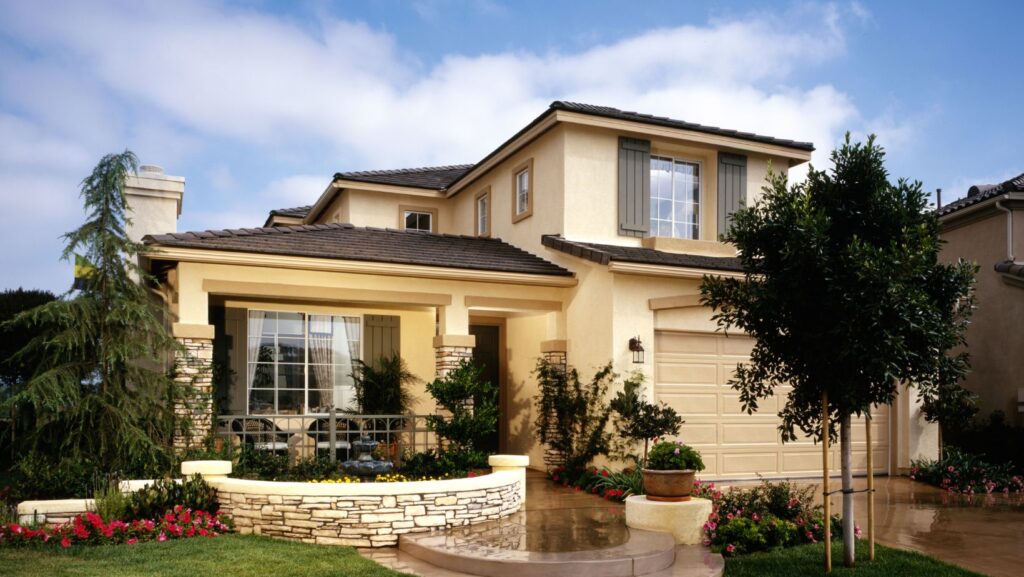
In recent years, Australia has seen a significant shift towards renewable energy, with solar power leading the charge. It’s not just the environmental and economic benefits pushing this surge; the role of solar panels in redefining home exterior design has become a compelling factor for many homeowners. Today, we’re exploring how the integration of solar technology not only powers homes sustainably but also enhances their aesthetic appeal, marking a new era in architectural design.
The Evolution of Solar Panel Technology and Design
Solar energy in Australia has grown from humble beginnings to a leading choice for renewable energy. The early days of bulky, obtrusive panels are long gone, thanks to advancements in technology. Today’s solar panels are not only more efficient but also sleeker and more versatile, opening up new possibilities for home design.
Thin-film solar cells and Building Integrated Photovoltaic (BIPV) systems are at the forefront of this revolution. Thin-film technology offers a lighter, more flexible alternative to traditional silicon panels, allowing for seamless integration into various architectural elements. BIPV systems take this a step further by incorporating solar energy technology directly into building materials, such as windows and roof tiles. These innovations have paved the way for solar panels to become an integral part of home design rather than an afterthought.
Aesthetic Integration Into Architecture
The evolution of solar technology has had a profound impact on architectural design. No longer limited by size and shape, architects and designers now have the freedom to incorporate solar panels in ways that complement and enhance the overall aesthetic of a home. From sleek, modern designs to more traditional looks, solar panels can be integrated to suit any style.
This transition to more design-friendly solar solutions reflects a broader trend toward sustainability in architecture. As homeowners become more environmentally conscious, the demand for designs that incorporate renewable energy sources in aesthetically pleasing ways has grown. The result is a win-win scenario: homes powered by clean energy that also look fantastic.
The Environmental and Economic Impact of Solar Panels in Australia
Australia’s sun-drenched landscape offers an ideal environment for solar energy, and homeowners across the country are tapping into this renewable resource. The impact of this shift towards solar power is significant, both for the environment and household finances.
Environmental Benefits
Embracing solar energy plays a crucial role in reducing our carbon footprint. By generating clean, renewable energy, solar panels drastically decrease the reliance on fossil fuels.

This not only helps in cutting down greenhouse gas emissions but also contributes to a healthier environment. For a sun-soaked country like Australia, the potential for solar energy is immense, and its widespread adoption is a step towards combating climate change.
Economic Advantages
The financial benefits of installing solar panels are equally compelling. With the cost of electricity rising, solar offers a way to lock in lower energy costs. Government incentives and rebates further reduce the initial investment, making solar more accessible to a wider audience. Over time, the savings on energy bills can be significant, often covering the cost of installation. Additionally, homes with solar panels tend to have a higher resale value, offering an economic advantage even if you decide to move.
Overcoming Challenges and Considerations
While the benefits of solar power are clear, there are challenges and considerations for homeowners. Addressing these concerns head-on is key to a successful transition to solar energy. Homes in sunnier areas, such as California or Arizona, will naturally generate more solar energy compared to homes in cloudier regions. For example, Irvine solar energy solutions are becoming increasingly popular due to the city’s abundant sunlight and local incentives that make installation more cost-effective. Homeowners in Irvine can take advantage of year-round sunshine to maximize their energy production and savings.
Aesthetic Concerns
One common hesitation revolves around the impact of solar panels on the home’s exterior design. Advances in solar technology have led to more aesthetically pleasing options, including slimline panels and tiles that blend seamlessly with traditional roofing. Customisable designs mean that homeowners no longer have to compromise on style for sustainability.
Placement and Orientation
Maximising the efficiency of solar panels involves careful consideration of placement and orientation. For Australian homes, panels should ideally face north for optimal sun exposure. However, innovative solutions and technologies allow for flexibility, ensuring that even homes with less ideal orientations can benefit from solar energy.
Regulatory and Structural Considerations
Before installation, it’s important to understand local regulations and ensure that your roof can support the weight of solar panels. Professional assessments and consultations can help navigate these challenges, ensuring that the transition to solar is smooth and compliant with all local standards.
The Future of Solar Panel Design and Home Aesthetics
The horizon for solar panel technology and home design aesthetics looks brighter than ever. Innovations in solar are set to further merge functionality with style, making renewable energy an integral part of home design. The future promises solar panels that are not just energy sources but also architectural elements, enhancing the aesthetic appeal of homes while being eco-friendly.

Emerging technologies like transparent solar panels could revolutionize window design, turning every glass surface into a power generator without compromising natural light. Similarly, solar skins are developing to match the exterior design of any home, making solar panels virtually indistinguishable from traditional roofing materials.
For homeowners considering taking the leap into solar, exploring solar quotes is a great starting point. This initiative not only helps in understanding the potential setup for your home but also aligns with the future of integrating green energy seamlessly into our lives.
Conclusion
As we’ve explored, solar panels are no longer just practical tools for energy generation; they’re becoming key players in home exterior design. The evolution of solar technology in Australia is not just redefining how homes look but also contributing to a more sustainable world. With the dual benefits of environmental responsibility and aesthetic enhancement, solar panels offer a compelling addition to any home.
The journey towards a sustainable future is filled with innovations that promise to integrate clean energy into our daily lives more seamlessly. As solar technology continues to evolve, the potential for creative and efficient home design expands. For those inspired to join this green revolution, Energy Matters is an excellent resource for exploring the possibilities solar power offers for your home.
In conclusion, the intersection of solar technology and home design aesthetics in Australia represents a thrilling frontier. It’s a movement that not only promises to beautify our homes but also to secure a sustainable future for generations to come. As we look ahead, the role of solar panels in home design is set to grow, transforming rooftops and facades into sources of both power and beauty.












